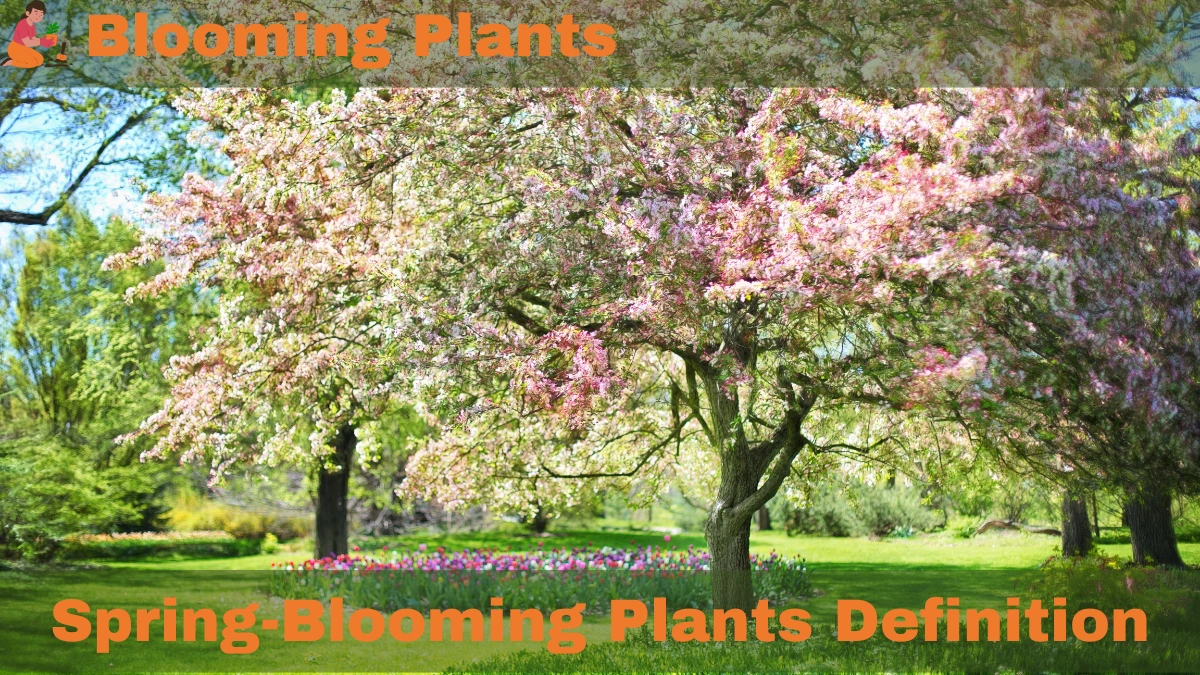Spring marks the awakening of nature, with vibrant blooms signaling the season of renewal. Spring-blooming plants are plants that flower predominantly during the spring months, painting gardens and landscapes with dazzling colors. In this comprehensive guide, we’ll explore the definition, types, benefits, and care tips for spring-blooming plants to help you create a flourishing spring garden.
What Are Spring-Blooming Plants?
Spring-blooming plants are species that exhibit their peak flowering phase during the spring season. These plants thrive as temperatures rise and days become longer, making spring their ideal blooming period.
Characteristics of Spring-Blooming Plants
- Seasonal Timing: They bloom between late winter and early summer, with most activity concentrated in spring.
- Colorful Flowers: Renowned for their bright and varied colors, including yellows, pinks, purples, and whites.
- Adaptability: Many spring bloomers are hardy and can thrive in diverse climates.
Examples of Popular Spring-Blooming Plants
- Daffodils: Known for their cheerful yellow petals, daffodils are a classic spring symbol.
- Tulips: These iconic blooms come in almost every color imaginable.
- Cherry Blossoms: Famous for their fleeting beauty, they create a magical spring atmosphere.
Scientific Definition of Spring-Blooming Plants
Botanically, these plants are categorized based on phenology (the study of life cycle events). Their growth and flowering cycles align with spring’s climatic conditions, triggered by increasing temperatures and light exposure.
Why Choose Spring-Blooming Plants for Your Garden?
Incorporating spring-blooming plants into your garden offers numerous benefits.
Aesthetic Appeal
Spring-blooming plants transform gardens into vibrant spaces, offering a burst of colors after the dormant winter months. Their variety ensures there’s a bloom for every taste and garden style.
Ecological Importance
These plants play a vital role in supporting early-season pollinators like bees and butterflies, providing them with essential nectar and pollen.
Seasonal Symbolism
Spring blooms signify hope, renewal, and growth, making them a meaningful addition to any space.
Low Maintenance Options
Many spring bloomers, like crocuses and hyacinths, require minimal care, making them suitable for gardeners of all skill levels.
Types of Spring-Blooming Plants
Spring-blooming plants are diverse, catering to various landscaping needs and preferences. Here are some popular categories:
Bulbous Plants
Bulbous plants store nutrients in underground bulbs, ensuring robust spring growth. Examples include:
- Tulips
- Hyacinths
- Crocuses
Flowering Trees and Shrubs
These larger plants add structure and elegance to gardens:
- Magnolias
- Lilacs
- Dogwoods
Perennial Favorites
Perennials offer consistent blooms year after year:
- Peonies
- Bleeding Hearts
- Iris
Wildflowers
Perfect for naturalistic gardens, wildflowers like bluebells and poppies thrive with minimal intervention.
How to Care for Spring-Blooming Plants
Proper care is essential for a thriving spring garden. Follow these tips to ensure your plants’ health and longevity.
Planting Tips
- Timing: Plant bulbs in autumn for a spring display.
- Soil Preparation: Ensure well-drained soil enriched with organic matter.
- Depth and Spacing: Follow specific guidelines for each plant species.
Watering and Fertilizing
- Watering: Keep soil consistently moist but not waterlogged.
- Fertilizing: Use balanced fertilizers during the growing season to support blooms.
Pest and Disease Management
- Common Pests: Aphids and slugs can damage spring plants; use natural deterrents.
- Disease Prevention: Ensure good air circulation and avoid overwatering to prevent fungal infections.
Post-Bloom Care
After blooming, deadhead spent flowers and allow foliage to die back naturally. This process helps the plant store energy for the next season.
Incorporating Spring-Blooming Plants into Your Landscape
Strategic placement of spring-blooming plants enhances garden aesthetics and functionality.
Designing a Seasonal Flower Bed
- Use contrasting colors for visual impact.
- Incorporate varying heights for depth and dimension.
- Combine early, mid, and late-spring bloomers for continuous color.
Creating Pollinator-Friendly Spaces
- Opt for native species to attract local pollinators.
- Plant in clusters to make it easier for insects to locate blooms.
Companion Planting
- Pair spring bloomers with evergreen shrubs for year-round interest.
- Combine with summer bloomers to extend garden color.
The Environmental Impact of Spring-Blooming Plants
Spring-blooming plants contribute to biodiversity and ecological health. They:
- Support pollinator populations.
- Improve soil structure and fertility.
- Enhance local ecosystems by providing habitats for insects and small animals.
FAQs About Spring-Blooming Plants
When should I plant spring-blooming bulbs? Plant bulbs in the fall, about 6-8 weeks before the first frost.
What are the easiest spring-blooming plants for beginners? Daffodils and crocuses are low-maintenance options ideal for new gardeners.
Can spring-blooming plants grow indoors? Yes, many spring bloomers, like tulips and hyacinths, can be forced to bloom indoors in containers.
Conclusion
Spring-blooming plants bring unmatched beauty, joy, and ecological value to any space. By understanding their characteristics, selecting the right varieties, and providing proper care, you can enjoy a stunning garden that welcomes the season of renewal with open arms. Start planning your spring garden today and transform your space into a vibrant haven of blooming plants!

